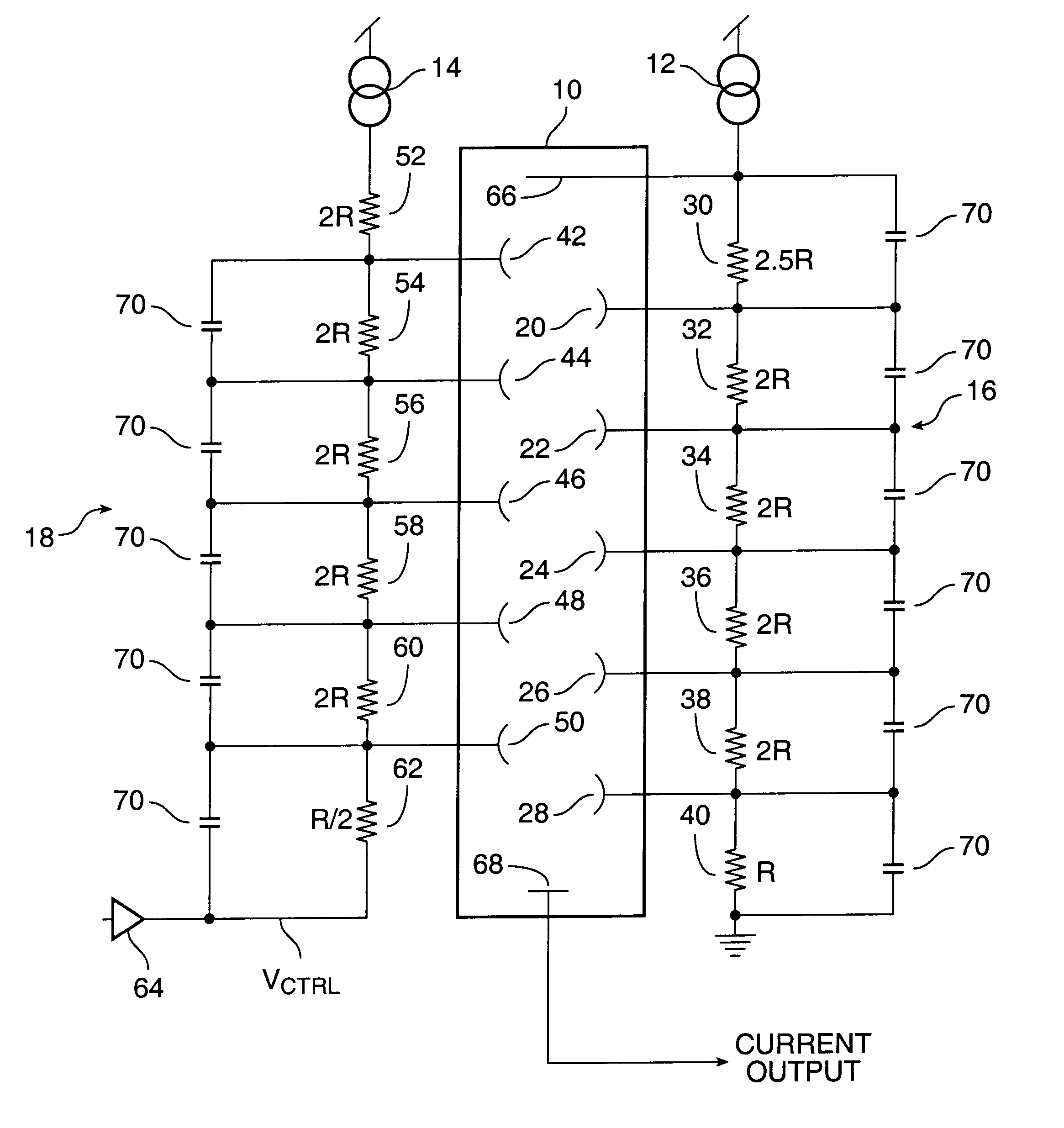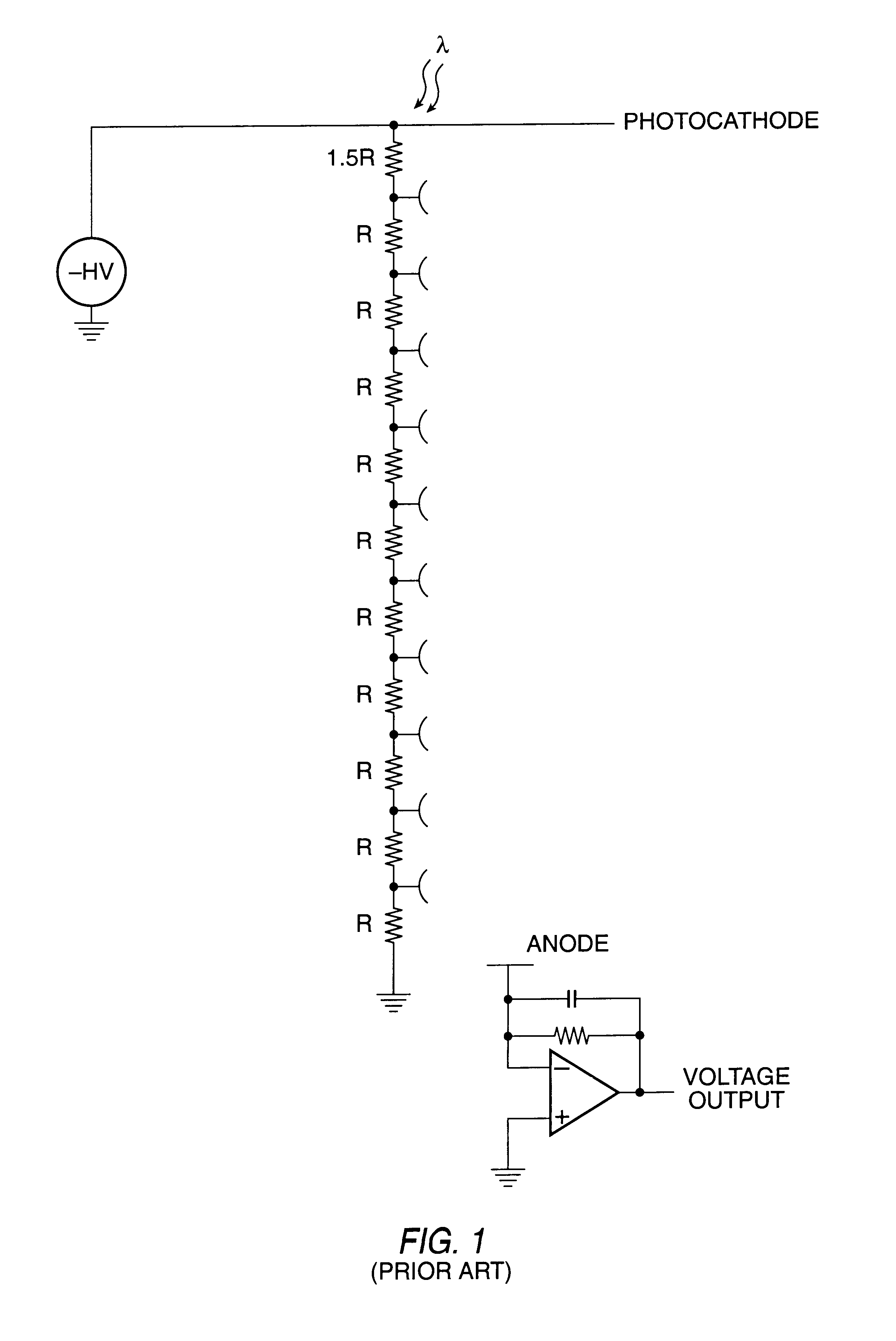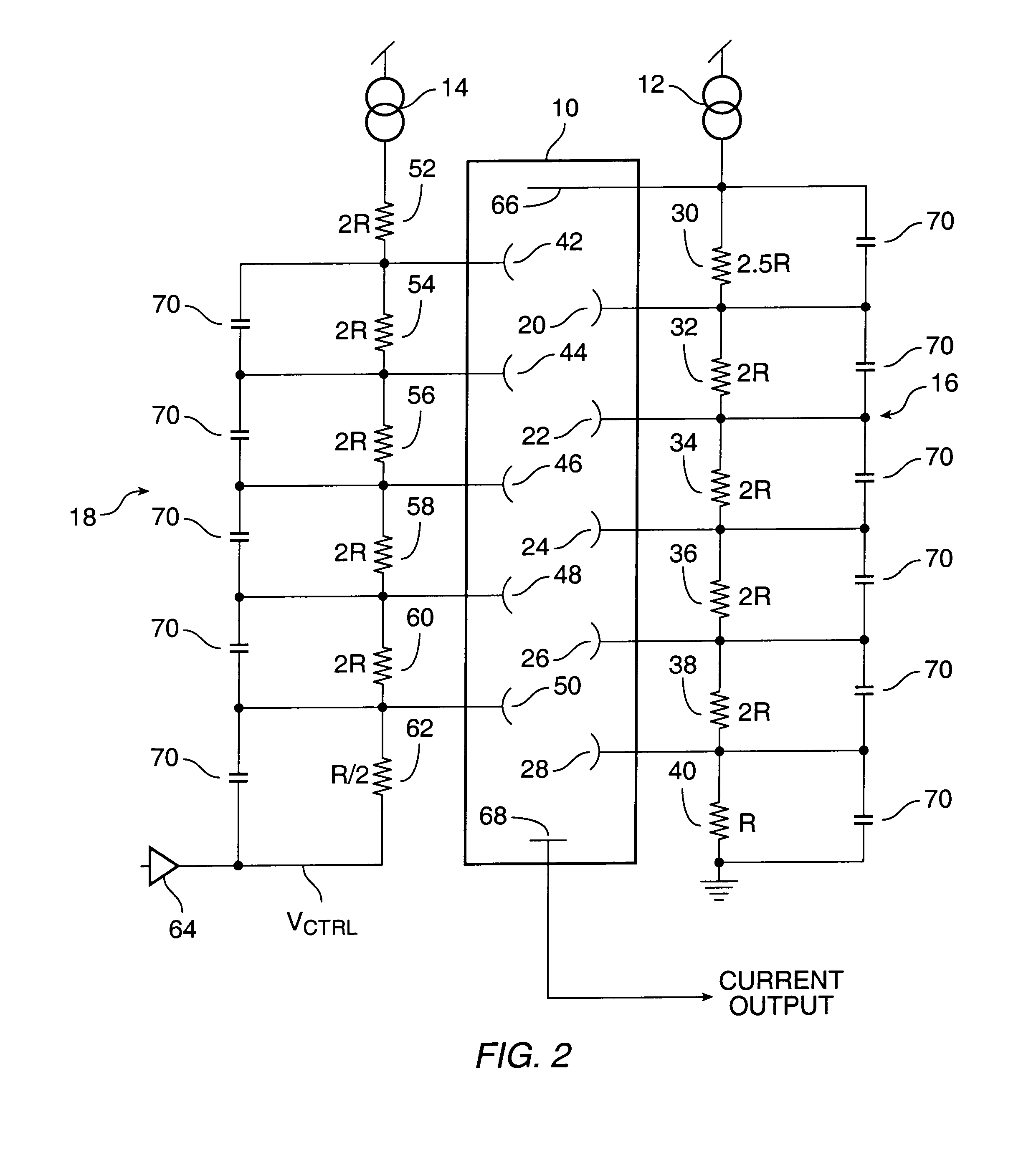High-speed logarithmic photo-detector
a logarithmic and photo-detector technology, applied in the field of photo-detectors, can solve the problems of high cost of photomultiplier tubes, damage, and limited useful dynamic range of subsequent electronics
- Summary
- Abstract
- Description
- Claims
- Application Information
AI Technical Summary
Problems solved by technology
Method used
Image
Examples
Embodiment Construction
Those of ordinary skill in the art will realize that the following description of the present invention is illustrative only and not in any way limiting. Other embodiments of the invention will readily suggest themselves to such skilled persons.
According to the present invention, apparatus and a method have been developed for rapidly and precisely controlling the gain of the photomultiplier tube. The photomultiplier tube is used with a high-speed feedback mechanism to continuously modulate the gain of the tube in response to the anode signal. The gain of the tube and the anode current are independently converted to ideal logarithms. These signals are then subtracted from one another (the log-space equivalent of division) to reconstruct a true logarithmic representation of the optical signal. By this method, the dynamic range of the photomultiplier tube can be extended to at least 6 orders of magnitude, for continuously varying signals with bandwidth of up to 25 MHz, and possible mor...
PUM
 Login to View More
Login to View More Abstract
Description
Claims
Application Information
 Login to View More
Login to View More - R&D
- Intellectual Property
- Life Sciences
- Materials
- Tech Scout
- Unparalleled Data Quality
- Higher Quality Content
- 60% Fewer Hallucinations
Browse by: Latest US Patents, China's latest patents, Technical Efficacy Thesaurus, Application Domain, Technology Topic, Popular Technical Reports.
© 2025 PatSnap. All rights reserved.Legal|Privacy policy|Modern Slavery Act Transparency Statement|Sitemap|About US| Contact US: help@patsnap.com



